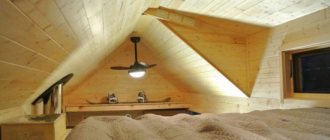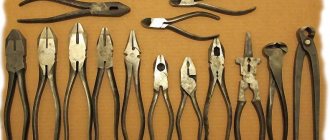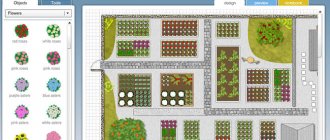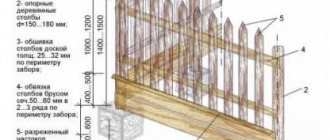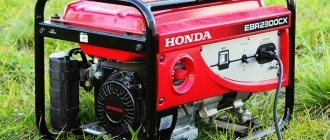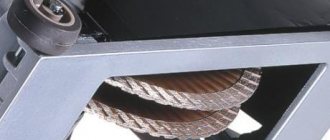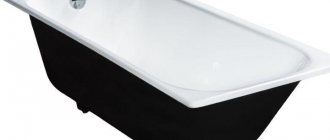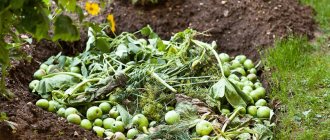Review author: Terra Design School
The lawn on the site can serve different functions, for example, you can arrange a barbecue area, sports or children's playground here. Depending on the purpose, a certain load is placed on the green cover, and this is what you should rely on when choosing vegetation for your site.
Next, we will look at the variety of grasses for the lawn along with a photo and provide recommendations regarding planting.
Tall lawn grasses
This category includes plants exceeding 1 m in height. They are distinguished by thick stems and light-loving properties. This lawn grass is attractive due to its rapid growth rate. If you need to green up your area in a short time, this is a suitable choice. But at the same time, you should be prepared for frequent plant care. Tall varieties are mowed several times a month. Let's look at the most popular representatives of the species.
Narrow-haired wheatgrass
The height of the stems is about 1 m. It is distinguished by a powerful root system reaching 3 m in depth. It shows all its qualities at 3-4 years. Wheatgrass grows as a bush and is not used on high quality lawns. Its main advantages:
- drought resistance;
- resistance to sudden temperature changes and frost;
- tolerance to winters with little snow.
Although the plant is unpretentious, it grows better on fertile soils with regular watering.
Creeping wheatgrass
A perennial plant from the Bluegrass family. The stems reach a height of 0.6-1 m. The roots are superficial, sometimes growing 15 m in length. Wheatgrass reproduces by seeds and rhizomes. The grass is unpretentious and survives even in unfavorable conditions. Main features:
- leaves are narrow-linear, arranged on the stem in an alternate order;
- the color of the leaf blade is bluish-green;
- The spikelet flowers are yellow-green and appear between May and July.
Planting a lawn once is enough; then the wheatgrass reproduces on its own.
Pay attention to the types of garden hydrangeas with photos and names.
Bonfire without bones
A perennial plant reaching a height of 1.2 m. The grass is characterized by a huge rhizome going 2 m deep. It is used for meadow-type lawns. For better survival, it is recommended to sow awnless brome in early May. Main advantages:
- undemanding to soil, develops well even in poor areas;
- tolerates trampling well and recovers quickly;
- high frost resistance.
The flowering period of the cereal is early July. The grass is not resistant to repeated mowing.
On topic: review of gasoline grass trimmers - https://top-luchshih.com/garden/equipment/grass-trimmer/
Vicoleaf sainfoin
Perennial plants with a developed root system. One bush produces many shoots, the height of which reaches 0.9 m. The leaves are 6-14 pairs, elliptical in shape. Sainfoin blooms in short ovoid clusters of bright pink color in May-June. Main features of the plant:
- drought resistance;
- frost tolerance;
- unpretentiousness to soils;
- love of light.
Sainfoin goes well in combination with other meadow herbs.
Lifehacks for sowing
To obtain the same density of turf over the entire area, the seed must be sown crosswise, passing in two directions. In the first pass, half of the seed is sown. You need to scatter it into the ground without any bald spots. The remaining part of the seeds is sown into the soil in the second pass, which is carried out according to the algorithm of the first.
Good adhesion of seeds to the soil can be ensured by spraying it with water from a fine spray nozzle. It is strictly forbidden to water the lawn after sowing with water from a hose without a sprayer.
What kind of lawn would you like to grow on your property?
MonoherbsHerb mixture
Before sowing grass, it is necessary to check the expiration date of the seed. You should not use seeds with a shelf life of more than 2 years for planting a lawn.
You can ensure a higher percentage of grass germination by using covering material or mulching the soil. In the first case, crops are covered with agrofibre if the air temperature during planting is below 15 degrees or there are many birds in the planting area. Mulching the soil is done when planting lawn grass in sandy or peat soil.
Semi-top lawn grasses
This group includes medium-sized lawn grasses. The height of the stems is from 50 cm to 1 m. Their main advantage is good bushiness. After cutting, the plants grow and come to life, creating a dense carpet. Used to decorate meadow lawns. They plant large areas and combine them with garden flowers.
Yellow alfalfa
An unpretentious, perennial plant with a powerful root system. From mid-July to mid-August, alfalfa turns the area into a beautiful yellow carpet. The inflorescences are oval, the flowers are small. Main features of the grass:
- drought resistance;
- negative attitude towards surface groundwater;
- resistance to temperature changes, frost resistance.
Alfalfa enriches the soil with useful microelements and evens out its composition. The plant is often used to improve the quality of the site and prepare for planting other crops.
Meadow timothy
The plant is suitable for sowing problem areas where other grasses do not linger. Timofeevka feels great in both swampy and mountainous areas. The variety has the following features:
- stem height up to 1 m;
- leaves are linear, long, rough to the touch;
- foliage color is gray-green;
- inflorescence in the form of a complex spike.
Timothy grass is frost-resistant. It begins to turn green immediately after the snow melts.
Pasture ryegrass
A widespread plant that can grow even in Western Siberia. The height of the stems does not exceed 0.5 m. Ryegrass is distinguished by narrow, bright green leaves, up to 30 cm long. They are slightly rough to the touch. Inflorescences in the form of loose spikelets. Main features of the grass:
- moisture-loving, does not tolerate drought well;
- in the first years of sowing it grows quickly;
- prefers fertile, sandy loam soils and loams.
An important advantage of ryegrass is that it forms a dense grass stand within a month after sowing. The plant is added to mixtures for sports and ornamental lawns.
We recommend: Clematis: varieties with photos and descriptions.
Types of herbal mixtures
There are several classifications of grass mixtures. Most often they are divided into:
- fast-growing (have strong tillering of grass mixtures, ensures good density of the lawn and rapid recovery of bald spots);
- solar (grass mixtures have a high degree of resistance to drying and fading under the influence of bright sun and high temperatures);
- shady (intended for planting in shaded areas);
- universal (grass mixtures that are undemanding to location and growing conditions).
Unlike wild grasses and some monocultures, grass mixtures are collected from plant seeds characterized by good germination. Herbs in mixtures are selected taking into account their advantages and disadvantages. The recipe for each lawn mixture is carefully worked out. They are also distinguished by purpose and growing conditions.
Medium-sized lawn grasses
This group includes plants whose height ranges from 50-70 cm. They form the so-called second tier. Main features of the grass:
- thin stems;
- strong bushiness after mowing;
- comparatively unpretentious in care.
Medium-sized grasses create a dense, squat lawn. Let's look at the most popular representatives of the species.
Red fescue
A plant with a creeping rhizome system. Thanks to this, it quickly levels the lawn, forming a thick, even grass stand that hides the depressions. The main features of fescue:
- leaves are grooved;
- color dark green or bluish green;
- life expectancy is about 8 years.
The grass grows well on loam and sandy loam soils. Loves moisture, but also tolerates drought. It has an average growth rate. When sown in autumn, the seeds germinate on the 8th day.
Meadow bluegrass
Perhaps the best among lawn grasses for creating dense, even carpets. A special feature of bluegrass is its creeping rhizome. Thanks to him, he independently fills all the recesses and irregularities in the area, forming a thick, durable turf. Main characteristics:
- leaves linear;
- color – all shades of green from dark to light;
- life expectancy is up to 30 years.
The grass is moisture-loving and develops better on fertile, aerated soils. Resistant to trampling, frost-resistant. It is recommended to sow bluegrass in the fall. Shoots appear on the 10th day. The plant develops slowly, so it does not need to be cut often.
Polevitsa
There are thin and shoot-forming varieties of the plant. Thin bentgrass has a creeping, thinned rhizome. Forms a strong and elastic turf. Main characteristics:
- leaves are short, narrow, dense;
- color rich green;
- sowing is recommended at the end of August, seedlings appear on the 12th day.
The bentgrass is thin, moisture-loving and frost-resistant. It fills the resulting bald spots on its own, but very slowly. The shoot-forming bentgrass has short, light green leaves. Thanks to creeping shoots, it quickly fills the area. Creates low, soft grass stand.
Planting a lawn
You can immediately purchase a ready-made lawn, for example, an artificial one, although this option will cost much more. To save a lot of money, you should start growing your own.
Let's look at how to properly plant grass for a lawn:
- Prepare the area, level the surface and moisten the soil.
- Plant in rainy and cloudy weather in early spring or late autumn. You should not do this on sunny or dry days, because... During this period, the earth may become covered with a crust, which will impede the germination process.
- Expect that up to 50 grams of seed will be spent per square meter. This value depends on the brand used, so read the exact instructions on the package, it will indicate the correct ratio.
- When sowing seeds, it is better to use a special tool, because this way the seeds will be scattered more correctly and evenly than if you do it manually. To do this, just make holes in the bottle or buy a special seeder.
- Then simply shake the container with the seeds above the ground little by little and make sure they fall evenly.
- When you finish sowing, cover everything with a small layer of soil using a rake.
- It is also necessary to compact the soil; for this you will need a heavy roller, which needs to be used to roll the surface.
- Don't forget to water at the end. Do this regularly, it is important to keep the soil moist.
When the grass has grown about 12 centimeters, start cutting. The best time to plant is at the end of autumn, when the warm summer has already passed and there is high humidity outside. So the snow will simply cover your future green canvas and simply maintain moisture in the soil.
Low-growing lawn grasses
Dwarf plants create a dense, low-growing carpet. You might think that this is a grass that does not require cutting. But this is not entirely true. Although it is slow, it is growing. But a dwarf lawn does not need frequent mowing and watering, so it is ideal for busy people or people who rarely come to their dacha. To create a dense, elastic turf, it is recommended to mow the plants at a height of 4-5 cm.
For low-growing lawns, use the above-mentioned bent grass, meadow grass, and red fescue. They are usually sown as a mixture rather than as a monoculture. Low-growing grass is expensive because it is in great demand among summer residents. Therefore, let’s consider a worthy replacement for classic lawn plants. These ground cover varieties look impressive and quickly green up the area.
White clover
If you choose the best grass that does not need cutting, then low-growing clover will be at the top of the list. Its shoots spread along the ground, slightly rising. Distinctive features of the plant:
- foliage is bright green, rich;
- white, spherical balls appear 2 times per season;
- The root system is strong, suppresses the growth of weeds, and is established even on slopes.
Clover tolerates a haircut well, but can do without it. Does not require frequent watering or fertilizing. Despite the delicate foliage, it is resistant to trampling.
Pay attention to the varieties of petunias with photos and names.
Periwinkle
The evergreen plant delights with bright colors all year round. Periwinkle is perennial, resistant to low temperatures, grows well in the sun and in the shade of trees. Its important quality is weed suppression. The characteristics of the variety are as follows:
- plant height is about 15 cm;
- foliage is glossy, dark green, dense;
- flowers are blue or blue.
To create a lawn, you need to plant many rooted cuttings. Periwinkle quickly takes root and grows thanks to creeping shoots. It can be planted both on flat areas and on slopes.
Thyme
Lawns can be not only beautiful, but also fragrant. Thyme sods are created slowly, but they are durable. The plant is a subshrub with woody shoots. They can be lodging or vertical. The main feature of the grass:
- height about 10-15 cm;
- leaves are small, green;
- inflorescences are loose-spikelet or capitate.
Thyme grows best in fertile, open, sunny areas. Drought-resistant, unpretentious in cultivation. For best appearance, it is recommended to carry out compacting pruning annually in the spring.
Classification of grass mixtures
Herbal mixtures for lawns are divided into several varieties:
- fast. Representatives of this group are wheatgrass, wheatgrass, grassland and multifloral ryegrass, and common comb grass. Plants develop quickly and with sufficient soil moisture, a green lawn is formed within a year after sowing. But fast-growing grasses are at the same time short-lived, while slow-growing grasses (meadow grass, red fescue, common bentgrass), on the contrary, are characterized by longevity ;
- shadow. They are adapted to a lack of light, therefore they feel good in shaded areas. Example - pasture ryegrass, red fescue. Also, these plants are characterized by resistance to mechanical influence (you can walk on the lawn);
- solar. These herbs can be exposed to the direct rays of the sun all day without harm to themselves. They also have high drought resistance. Representatives of this group are meadow bluegrass, alfalfa, sheep fescue, etc.;
- universal. Some herbs, for example, bentgrass, tolerate a wide range of negative factors - heat, frost, drought. That is why they are called universal: such a lawn can be grown in almost any region. These plants also have negative sides. In the same bent grass, for example, growth slows down after cutting.
Rhizomatous lawn grasses
The development of the root system influences its lifespan, adaptability to different types of soil, and requirements for movement. Therefore, there is a classification of lawn grass based on the type of roots. The rhizomatous variety is distinguished by its superficial location. The shoot penetrates shallowly into the ground. Creeping shoots sprinkled with soil form nodes. Rhizomes grow quickly, contributing to the formation of many new shoots. Thanks to this, dense grass stands are maintained for many years.
The plants discussed above belong to the rhizomatous type: red fescue, bluegrass, and bentgrass. The meadow foxtail also belongs to this species. This is a perennial, reaching a height of about 1 m, and under favorable conditions, 1.2 m. The main features of the grass:
- foliage is linear, narrow, rough to the touch;
- green color with a bluish tinge;
- paniculate inflorescences up to 10 cm long, appear in June.
It is best to combine foxtail with creeping wheatgrass, bentgrass, and bluegrass. The plant does well in damp areas. It can be planted in swampy areas, near water bodies. Foxtail does not tolerate drought well, but is frost-resistant. It grows in one place for up to 10 years. Propagated by seeds.
Look at the types of dracaena with photos and names.
Loose bush lawn grasses
This category includes plants with a shallow root system. They have 1 tillering node, but this does not prevent them from creating a dense grass cover. The aboveground bush is usually spreading and produces numerous shoots. Let's look at the most popular representatives of the group.
Meadow fescue
The grass creates an even, fluffy lawn in the first year of life. A month after sowing, she completely greens the area. Fescue cannot be called a grass that does not require maintenance, but it is still able to survive a harsh winter without loss, withstands prolonged stagnation of moisture, and can go for a long time without watering during drought. Main features of the variety:
- leaves are long, glossy at the bottom;
- the bush is formed from straight generative and short vegetative stems;
- color rich green;
- inflorescences in the form of panicles.
The more often you mow, the thicker the grass stand, since frequent mowing increases the number of shoots. The green mass grows very quickly.
Comb
Ideal for Moorish lawns. Also, the plant can often be purchased as part of a mixture for ordinary and sports lawns. It is not recommended to plant comb grass together with bentgrass and fescue, as the plants conflict with each other. Main features of the grass:
- shoot height from 30 to 80 cm;
- if you don’t mow, you can admire the blooms all summer long;
- propagated by seeds;
- reaches maximum development at 2-3 years.
The comb is resistant to trampling. Remains green until late autumn. Immediately after the snow cover melts, you will be pleased with the green carpet. It grows well on sandy soils and tolerates drought.
Rootless wheatgrass
A loose bush grass characterized by the absence of rhizomes. The main feature is the looseness of the inflorescences. Wheatgrass is relatively unpretentious and thrives on fertile soils and black soils. Does not withstand prolonged flooding. Main features:
- foliage is linear, about 0.5 cm wide;
- color rich green;
- inflorescences in the form of spikelets appear at the end of June.
When sowing a lawn, the consumption per 1 m2 of wheatgrass is about 15-20 g. It sprouts quickly and completely greens the area in a short time.
We recommend: Ferns: names and photos.
When and how to sow seeds
Lawn sowing can be done from early spring to September. In spring, this is done from April, when the earth warms up under the sun and the moisture has not yet evaporated. In a humid environment, the seeds quickly swell and begin to germinate. Seeds sown no later than the second ten days of September have time to germinate before the onset of cold weather, and young shoots take root even before the first frost. The root system of plants endures winter with virtually no loss.
You can also sow in the summer, but for this you should choose favorable conditions: in cloudy weather, after rain. To prevent young seedlings from drying out, you need to water the soil all the time until the grass comes into force.
How to seed a lawn:
- Calculate the seed rate for the entire lawn and measure the required amount of seed;
- Divide all the land allocated for the lawn into small, equal-sized plots; Depending on the area, there can be 2, 4, 6 or more (it’s more convenient when you get an even number);
- The mass of seeds is also divided into equal parts according to the number of plots;
- Sow each area with one portion of seeds, scattering them evenly by hand;
- You should move from the sown part in the direction of the not yet sown part.
A few weeks before sowing, the soil is dug up, and a few days later it is leveled with a rake. Immediately after sowing, the soil is leveled again with a rake in order to lightly cover the seeds with soil.
For better contact of the seed with the soil, it is recommended to roll the area with a light roller. It will compact the top layer, and the seeds will begin to germinate faster.
Useful video on planting lawn mixtures:
Taproot lawn grasses
Plants form lush bushes. They look beautiful and do not require special care. As the name suggests, their root system is taprooted. The dominant shoot is superficial, but young shoots develop on the taproot. Over time, it thickens and strengthens, going deeper into the soil. Let's look at the most popular representatives of the group.
Horned frog
A unique plant, suitable for the most difficult areas where other grasses do not take root. Used to create meadow-type lawns. Lyadvenets will not only green the area, but also enrich poor soils with phosphorus, potassium, calcium, and nitrogen. Main characteristics of the variety:
- the foliage is soft, rich green;
- the flowering period lasts from early May to mid-July;
- the flowers are bright yellow.
The horned frog does well in the shade and in the open sun. It is frost-resistant, not afraid of trampling, and can go without watering for a long time. It can be combined with alfalfa and clover.
Blue alfalfa
This is an excellent green manure that is used not only for landscaping the site, but also to enrich the composition of the soil. Blue alfalfa can be used as a monoculture or as part of grass mixtures. Main features of culture:
- leaves are dark green, fleecy;
- the height of the stems can reach 1 m;
- blue flowers.
Reviews from summer residents warn that alfalfa does not develop well in the shade, as well as on heavy, saline clay soils. Therefore, it is advisable to choose loose, open areas. The plant does not like waterlogging. Grows well in combination with brome and fescue.
Choosing the type of lawn
Lawns are usually divided into several main types. The first involves seeding, where you grow the grass yourself and cut it regularly. It is for this type that it is worth choosing a plant. This is the most economical option, but at the same time it is labor-intensive.
The second is to purchase turf rolls with ready-made grass. In other words, this is rolled grass for the lawn, which can simply be rolled out on a pre-prepared area.
The third is artificial vegetation. For such a solution it will also be necessary to prepare the territory. These lawns are ideal for those who cannot maintain the garden themselves or hire a gardener. Artificial grass will not require regular mowing or watering, and its appearance will always be perfect. But it will be expensive.
When using artificial or cultivated grass, it is important to properly prepare the area. If you make a mistake, weeds may appear in the future and grow through the green cover.
